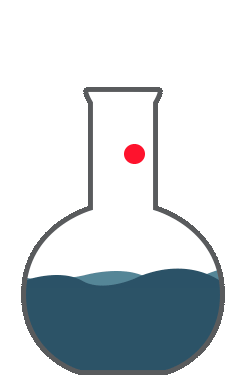
Please wait...
The Reality of Cannabis Testing: Thinking Outside the Bud
It seems that every week new information is being released about the regulation of cannabis in the United States. Recently, with the legislation opening up a new agricultural and testing industry around cannabis, labs are now on the forefront of testing and legislation. The science and regulatory communities are now defining the roles and targets for testing in this new industry, as well as redefining global testing strategies for testing harmonization all over the world. The legalization of cannabis in certain states has started a gold rush of growing facilities and testing labs all trying to shape law and regulation out of what previously was an unregulated, illegal product.
Read the Information Brief
Mercury Poisoning: “The Minamata Poisoning”
On the western coast of the southern Japanese island of Kyushu, Minamata Village was officially designated by the Japanese government in 1889 with just over 12,000 residents. Less than 20 years later, in 1908, the Nippon Nitrogen Fertilizer Company (later the Chisso Corporation) built its factory in Minamata. The plant began manufacturing acetaldehyde in 1932 using mercury sulfate as a catalyst. By the end of World War II in 1949, Minamata Village had grown into a city of over 40,000 people. A large part of the economy of the city (over half of its tax revenue) was the chemical factory and its acetaldehyde product which was an important component in the manufacture of plastics. The plastic boom saw the increase of acetaldehyde product grow from over 200 tons to more than 45,000 tons by 1960.
Read the Information Brief
An Overview of International Methods and Regulations for Airborne Metal Particulate
In today’s work-safety landscape, air quality concerns have become a constant in multiple industries and business sectors. For worker safety and employer compliance, multiple standardization and regulatory bodies have put forth methods for air monitoring, including those for airborne metal particles. In the interest of demystifying the wide variety of voluntary consensus standards and directives, this is a cursory overview of the major regulations of concern.
Read the Information Brief
History of Pesticides and Pesticide Solubility
Modern pesticides are a product of the birth of the first synthetic organic chemicals (organochloride compounds) in the late 19th and early 20th centuries. Many organochloride compounds, such as BHC and DDT, were first synthesized in the 1800s’, but their properties as insecticides were not fully discovered and exploited until the late 1930’s. The organochloride class of pesticides grew out of those initial discoveries and, through the 1930’s-1970’s, developed into the range of organochloride pesticides known today.
Read the Information Brief
Hand Sanitizer Primer
During the last year, the use of hand sanitizer has exponentially increased from an occasional preventive during the flu season, to multiple daily applications throughout the day. The hand sanitizer we know has origins in waterless hand cleaners, which have been in production since the 1940s. Gel hand cleaners were created in the late 1980s, but they were not released until the late 1990s. It has only been in the last decade that hand sanitizers became common products in every home or pocket. The current 2020 pandemic fueled massive sales of all types of hand sanitizers. The purpose of hand sanitizers is to disinfect your hands when soap and water are unavailable, by killing infectious biological agents, such as bacteria and viruses.
Read the Information Brief
Syringes
There are multiple types of syringes that can be used in the laboratory. Each syringe has a different purpose based on what is being performed in the lab as well as different care and cleaning techniques. A microliter syringe can be used only when using liquids. They are ideal for homogeneous samples that are not prone to precipitation or bonding with the glass walls of the syringe. A heterogeneous solution may be used but the syringe must be cleaned diligently after each use. In some cases, that is not enough to keep the syringe clean which will result in the tight tolerance between the glass and the plunger. The plunger cannot be interchanged or replaced with a microliter syringe so a gastight syringe is the best option for a heterogeneous syringe.
Read the Information Brief
Understanding Pests, Pest Control and Pesticides
Since the start of the production boom in the 1940’s to present day, a huge catalog of thousands of insecticides, herbicides, and general pesticides was developed, including organochlorides (DDT, BHC), organophosphates (parathion, malathion, azinphos methyl), carbamates (aldicarb, carbofuran, etc.), and neonicotinoids (imidacloprid and acetamiprid). As modern pesticides develop, there has been a shift to understand and apply the chemical properties and interactions of pesticides with both the environment and animals other than the target pests. Early pesticides were, for the most part, persistent chemicals that affected the nervous system of invertebrates. These pesticides had, in many cases, limited solubility and persisted for years or decades after delivery. More modern pesticides take into consideration environmental impact and a larger pest management strategy.
Read the Information Brief